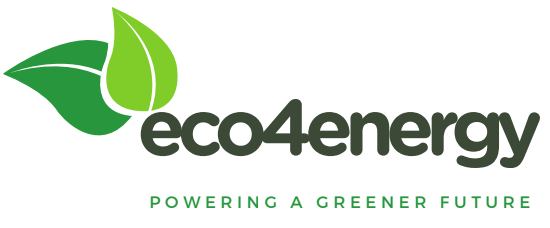Introduction
Laptops have become an essential part of our lives, whether for work, entertainment, or staying connected with loved ones. However, the convenience of laptops comes at a cost – energy consumption. The more energy your laptop consumes, the higher your electricity bills will be. In this article, we will share six energy-saving laptop tips that will not only help you lower your bills but also reduce your environmental impact. By implementing these simple changes, you can enjoy the benefits of your laptop while being mindful of energy usage. Let’s get started!
-
Adjust Power Settings
One of the easiest ways to save energy on your laptop is by adjusting the power settings. Most laptops have power-saving modes that can be customized to suit your needs. Lower the screen brightness to an optimal level, as the display consumes a significant amount of energy. Set the sleep mode to activate after a short period of inactivity, and adjust the power plan settings to prioritize energy efficiency. By making these adjustments, you can significantly reduce the energy consumption of your laptop.
-
Unplug Unused Peripherals
When not in use, peripherals such as printers, external hard drives, and USB devices continue to draw power from your laptop. Even if they are not actively being used, they can still consume energy. To save energy, unplug any peripherals that are not in use or consider using a power strip with an on/off switch to easily turn off multiple devices at once. This simple habit can make a noticeable difference in your energy consumption and ultimately lower your bills.
-
Use Energy-Efficient Apps and Software
Certain apps and software can be more energy-intensive than others. To save energy, choose energy-efficient alternatives whenever possible. For example, opt for web-based applications instead of desktop applications, as they tend to consume less energy. Additionally, consider using software that has energy-saving features built-in, such as power management options or automatic screen dimming. By being mindful of the software you use, you can optimize your laptop’s energy consumption.
-
Enable Power-Saving Features
Most laptops come with built-in power-saving features that can help reduce energy consumption. Enable features such as automatic display dimming, which adjusts the screen brightness based on ambient lighting conditions. Additionally, enable the hibernation mode, which saves your work and settings and then powers off your laptop. This mode is more energy-efficient than sleep mode, as it uses minimal power while preserving your work. By utilizing these power-saving features, you can maximize energy efficiency and extend your laptop’s battery life.
-
Keep Your Laptop Clean and Well-Maintained
A clean and well-maintained laptop operates more efficiently, resulting in lower energy consumption. Dust and debris can accumulate in the laptop’s cooling system, causing it to work harder and consume more energy to stay cool. Regularly clean the vents and fans using compressed air to ensure proper airflow and cooling. Additionally, keep your laptop updated with the latest software and drivers, as updates often include performance optimizations that can improve energy efficiency.
-
Optimize Battery Usage
If you frequently use your laptop on battery power, optimizing battery usage is crucial for energy savings. Adjust the power settings to maximize battery life, such as reducing the screen brightness, disabling unnecessary background processes, and closing unused applications. Consider using power-saving modes specifically designed for battery usage, as they can extend the battery life significantly. Additionally, avoid leaving your laptop plugged in and fully charged for extended periods, as this can degrade the battery’s lifespan and efficiency.
Frequently Asked Questions (FAQ)
Q1: Can using a laptop on battery power save energy?
A1: Yes, using a laptop on battery power can save energy compared to using it while plugged in. However, it’s important to optimize battery usage by adjusting power settings and closing unnecessary applications to maximize energy efficiency.
Q2: Does screen brightness affect energy consumption?
A2: Yes, screen brightness has a significant impact on energy consumption. Lowering the screen brightness can reduce the energy consumed by the display, resulting in energy savings and extended battery life.
Q3: Are there energy-efficient alternatives to resource-intensive software?
A3: Yes, there are energy-efficient alternatives to resource-intensive software. Opt for web-based applications instead of desktop applications, as they tend to consume less energy. Additionally, look for software that has energy-saving features built-in, such as power management options or automatic screen dimming.
Q4: How often should I clean my laptop’s cooling system?
A4: It’s recommended to clean your laptop’s cooling system every three to six months, depending on usage and environmental conditions. Regular cleaning ensures proper airflow and cooling, resulting in improved energy efficiency and performance.
Q5: Can leaving my laptop plugged in all the time increase energy consumption?
A5: Leaving your laptop plugged in all the time can increase energy consumption. When a laptop is fully charged and still connected to the power source, it continues to draw power even if it doesn’t need it. This constant charging can lead to unnecessary energy usage and may also degrade the battery’s lifespan and efficiency over time.
Conclusion
By implementing these six energy-saving laptop tips, you can effectively lower your bills and reduce your environmental impact. Adjusting power settings, unplugging unused peripherals, using energy-efficient apps and software, enabling power-saving features, keeping your laptop clean and well-maintained, and optimizing battery usage are simple yet effective ways to save energy. Not only will you notice a difference in your electricity bills, but you will also contribute to a greener and more sustainable future. So, start implementing these tips today and enjoy the benefits of a more energy-saving laptop experience.

